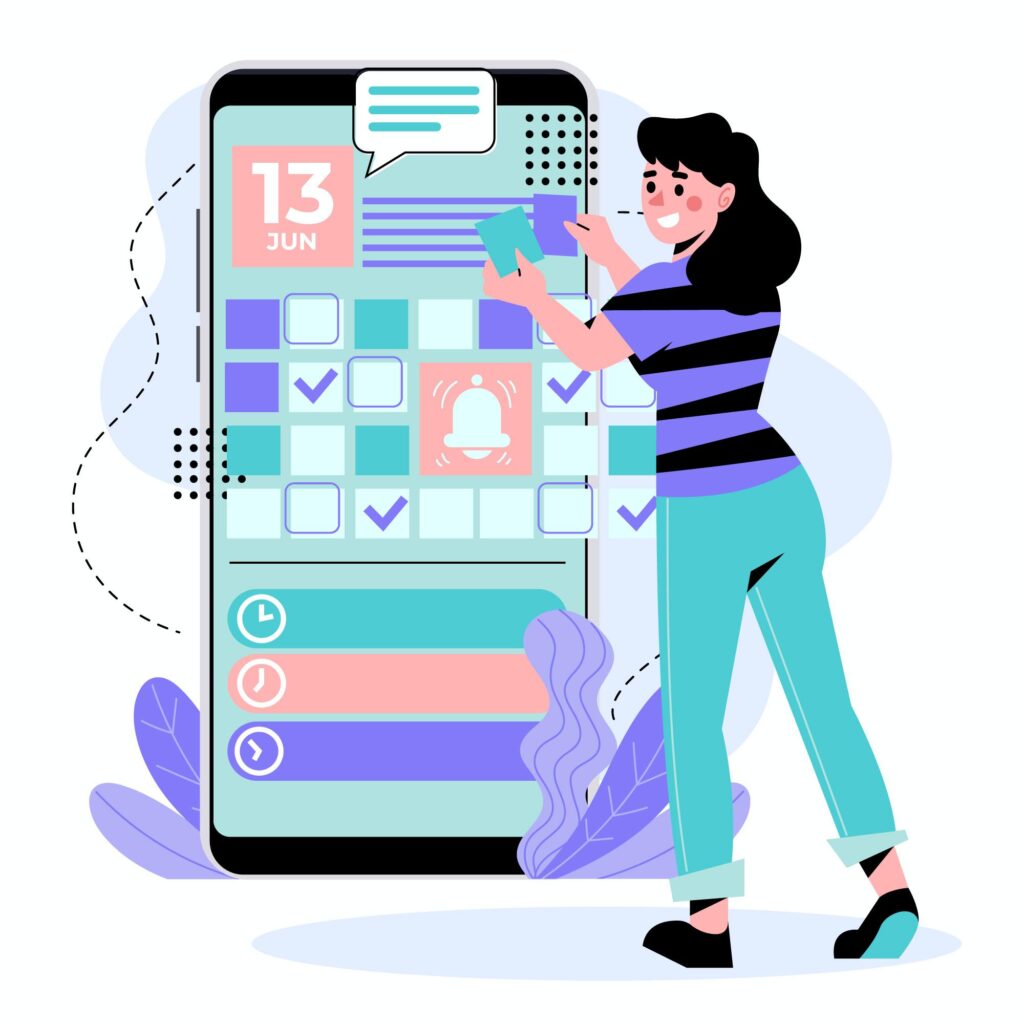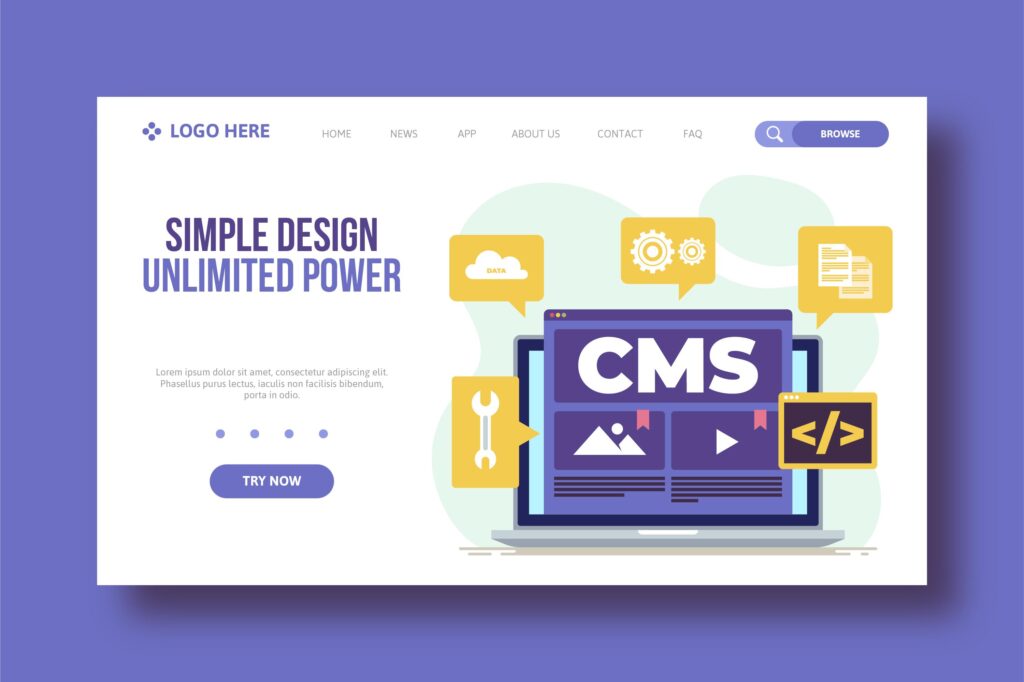In today’s digital age, mobile apps have become an integral part of our lives. Whether it’s for productivity, entertainment, or solving everyday problems, mobile apps have revolutionized the way we live. If you have a brilliant app idea and are ready to bring it to life, this step-by-step guide to mobile app development will be your roadmap to success. We will explore the entire journey, from concept to the App Store, while keeping our focus on a critical keyword for SEO: “mobile app development.”
Chapter 1: Idea Generation and Validation (Keyword: Mobile App Development)
1.1 Identifying Your Target Audience
Before diving into development, understanding your potential users and their needs is crucial for success. Proper market research will help you refine your app idea. This step in mobile app development is fundamental, as it sets the foundation for everything that follows.
Action Steps:
- Conduct surveys and interviews to identify pain points and user preferences.
- Analyze demographic data and user behaviors to create user personas.
- Identify your app’s value proposition.
1.2 Market Trends and Competition
Explore the app stores to identify trends and analyze competitors. This step will help you create a unique selling proposition for your app. Keeping an eye on the competition is vital to ensure your app can stand out in a crowded marketplace.
Action Steps:
- Study similar apps in your niche and take note of their features and reviews.
- Identify gaps in the market where your app can provide a unique solution.
- Consider how you can differentiate your app from the competition.
1.3 Validation and Prototyping
Building a prototype or conducting surveys can help validate your idea with potential users. It’s a crucial step to ensure there’s a demand for your app. The idea validation stage ensures that your mobile app development project is built on a solid foundation.
Action Steps:
- Create a basic prototype or mockup of your app’s user interface.
- Share the prototype with potential users and gather feedback.
- Adjust your concept based on user feedback to align it with market demand.
Chapter 2: Planning Your App Development
2.1 Defining the App’s Purpose
Clearly outline what your app will do and its core features. This will serve as your development roadmap. The planning stage sets the direction for your mobile app development project, ensuring that every feature and functionality serves a defined purpose.
Action Steps:
- Create a detailed feature list and prioritize them.
- Define user stories and use cases to guide development.
- Set clear project goals and objectives.
2.2 Budget and Resources
Determine your budget and gather the necessary resources, whether it’s a team of developers or the software and tools required for development. Budgeting is a crucial aspect of mobile app development to ensure you have the resources needed to complete your project.
Action Steps:
- Estimate development costs, including salaries, software licenses, and marketing expenses.
- Secure funding through investors, grants, or crowdfunding, if needed.
- Assemble a team of skilled developers, designers, and project managers.
2.3 Platform Selection
Decide whether your app will be for iOS, Android, or both (cross-platform). Choose the right technology stack for your project. Selecting the appropriate platform for your mobile app development is essential to reach your target audience effectively.
Action Steps:
- Research the market share of iOS and Android in your target region.
- Consider factors such as development cost, time to market, and user demographics.
- Choose a development framework and programming language based on your platform selection.
Chapter 3: Designing Your Mobile App
3.1 User Experience (UX) Design
Create an intuitive and visually appealing user interface. A great UX design can make or break your app’s success. The UX design process ensures that your app is user-friendly and delivers an exceptional user experience.
Action Steps:
- Develop wireframes and flowcharts to plan the user journey.
- Create interactive prototypes to test and refine the user interface.
- Ensure consistent design elements and easy navigation throughout the app.
3.2 User Interface (UI) Design
Design your app’s layout, color schemes, and interactive elements. Make sure it aligns with your brand and resonates with your target audience. The UI design complements the UX design by making your app visually appealing and engaging.
Action Steps:
- Choose a visually appealing color scheme and typography.
- Design icons, buttons, and other visual elements that align with your brand.
- Test the app’s UI design with actual users and gather feedback for improvements.
Chapter 4: Development
4.1 Coding and Development
Hire a developer or a team of developers to write the code for your app. Regularly test and debug to ensure a smooth user experience. The development phase is where your app idea begins to take shape as functional software.
Action Steps:
- Write clean and efficient code according to best practices.
- Conduct regular code reviews and testing to identify and fix bugs.
- Keep the development team well-coordinated and on track with project milestones.
4.2 Testing
Thoroughly test your app for bugs, glitches, and performance issues. User feedback can be invaluable at this stage. The testing phase ensures that your mobile app is reliable and free of errors before it reaches the App Store.
Action Steps:
- Perform functional, usability, and performance testing.
- Engage beta testers to get real user feedback.
- Create a system for reporting and tracking bugs and issues.
Chapter 5: Launching Your App (Keyword: Mobile App Development)
5.1 App Store Guidelines
Familiarize yourself with the guidelines of the App Store (Apple’s App Store or Google Play Store) to ensure your app meets their requirements. Adhering to these guidelines is essential to get your app approved and published.
Action Steps:
- Review the app store guidelines and ensure your app complies with them.
- Prepare all necessary app assets, including screenshots, icons, and descriptions.
- Follow the submission process for your chosen platform.
5.2 App Store Optimization (ASO)
Optimize your app’s listing with the right keywords, eye-catching visuals, and a compelling description. This will help your app rank higher in search results. App Store Optimization (ASO) is crucial for increasing the discoverability of your app.
Action Steps:
- Conduct keyword research to identify relevant and high-traffic keywords.
- Write a compelling app description and highlight key features.
- Create attractive app icons and screenshots to entice potential users.
Chapter 6: Post-Launch Activities
6.1 Marketing and Promotion
Create a marketing plan to reach your target audience. Utilize social media, email marketing, and other strategies to promote your app. Effective marketing is essential to ensure that your app gains visibility and attracts users.
Action Steps:
- Develop a marketing strategy tailored to your target audience.
- Use social media, content marketing, and paid advertising to promote your app.
- Engage with your user base and encourage reviews and referrals.
6.2 User Feedback and Updates
Continuously gather user feedback to make improvements and release updates. This keeps your app relevant and engaging. Listening to user feedback is key to ensuring the long-term success and sustainability of your app.
Action Steps:
- Implement a system for users to provide feedback and suggestions.
- Analyze user reviews and ratings for insights into areas that need improvement.
- Release regular updates to add new features, fix bugs, and enhance user experience.
Chapter 7: Monetization Strategies
7.1 Choosing a Monetization Model
Explore various revenue streams such as in-app ads, freemium, subscriptions, or one-time purchases. Selecting the right monetization model is vital to ensure your app generates revenue.
Action Steps:
- Analyze your target audience and industry to determine the most suitable model.
- Implement monetization features within your app while ensuring they do not disrupt the user experience.
- Continuously monitor revenue and adjust your strategy as needed.
7.2 App Analytics
Leverage analytics tools to track user engagement, app performance, and revenue generation. Data-driven decisions are essential for optimizing your app and its monetization.
Action Steps:
- Integrate analytics tools to collect user data, including user behavior and demographics.
- Regularly review and analyze app performance metrics.
- Use data insights to make informed decisions about app updates and monetization strategies.
Chapter 8: Scaling and Future Development
8.1 Scaling Your App
Consider expanding to other platforms or adding new features to meet evolving user needs. Scaling your app helps you reach a broader user base and stay competitive in the market.
Action Steps:
- Analyze user feedback and market trends to identify opportunities for expansion.
- Plan the development of additional features or versions of your app.
- Continuously evaluate and adjust your app’s strategy to stay relevant.
8.2 Legal and Security Considerations
Protect your app by addressing legal issues and ensuring data security. Maintaining the legal and security aspects of your app is vital to protect both your users and your business.
Action Steps:
- Consult with legal experts to ensure your app complies with privacy and data protection laws.
- Implement robust security measures to protect user data and prevent breaches.
- Keep your app’s terms of service and privacy policy up-to-date.
Conclusion
Turning your app idea into a reality is a thrilling and rewarding journey. By following this step-by-step guide to mobile app development, you’ll have a clear roadmap to success. Remember to keep the keyword “mobile app development” in mind throughout your journey, ensuring your app is not only well-developed but also highly discoverable on app stores. So, go ahead and bring your innovative app idea to life, and make a positive impact in the digital world. Mobile app development is a multifaceted process that requires careful planning and execution at each stage. With the right approach, dedication, and attention to detail, you can transform your concept into a successful app that users love. Don’t hesitate to take that first step and start your mobile app development journey today. The world of app development is waiting for your brilliant ideas to come to life. Good luck!



